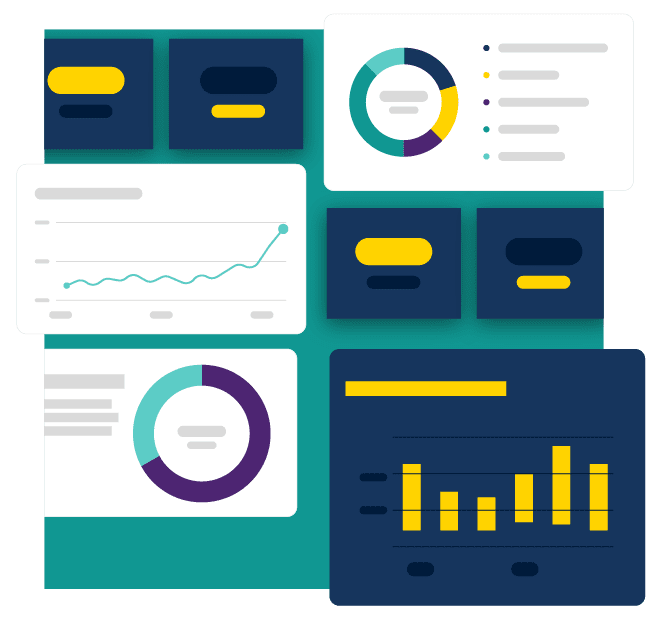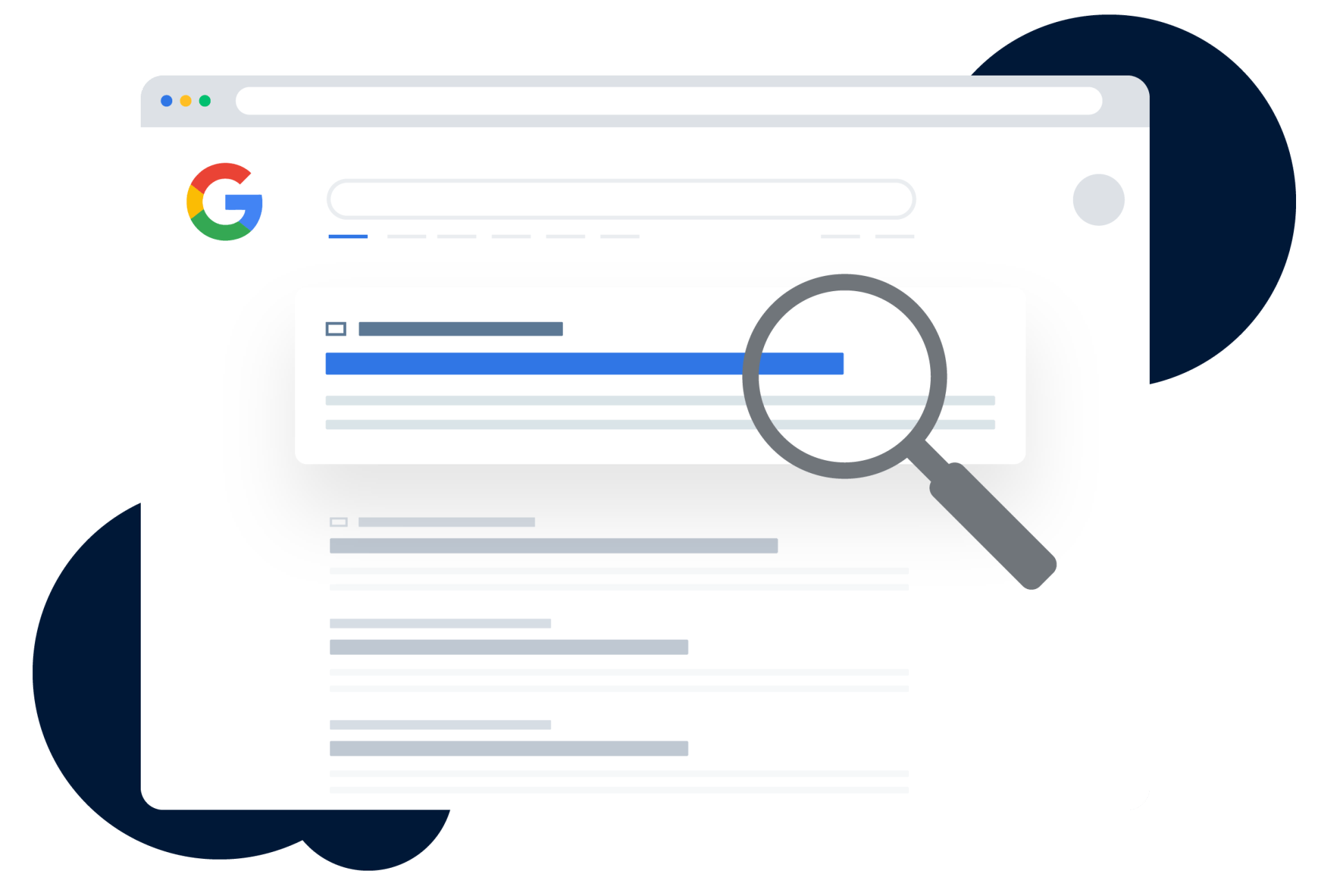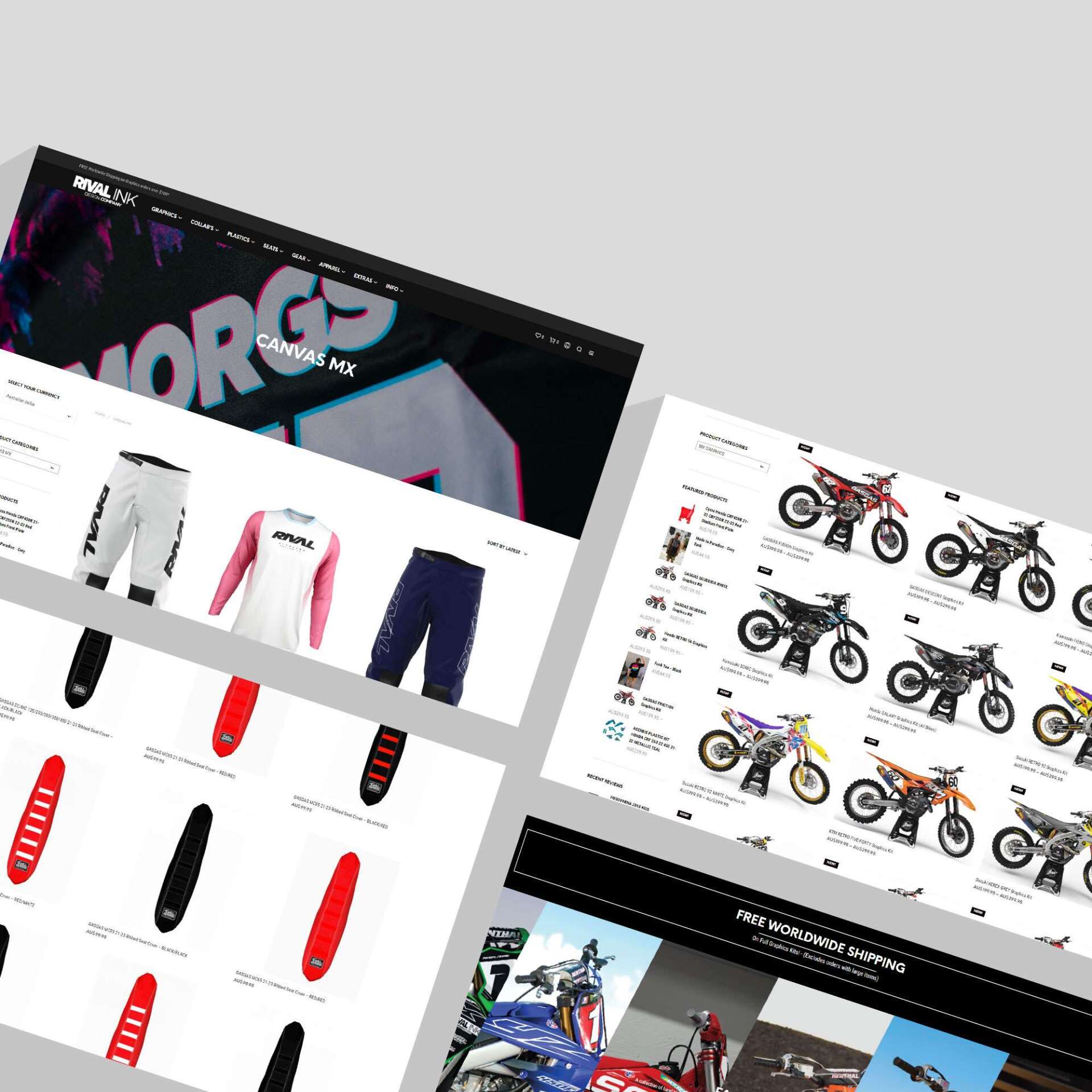The Definitive Guide to Growing Your Customer Base with Ads
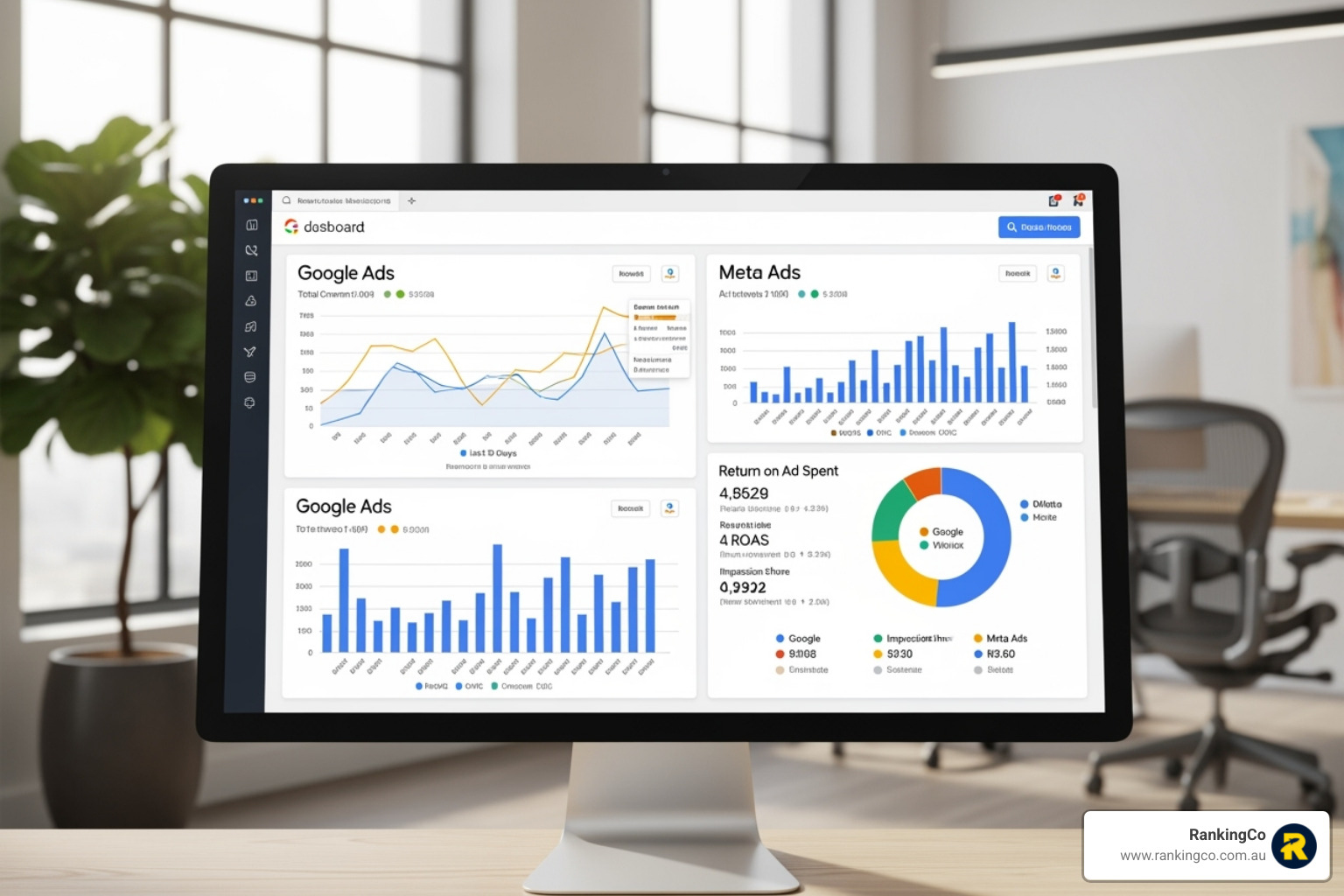
Why Growing Your Customer Base with Google & Meta Ads is Essential for Business Success

Growing your customer base with Google & Meta Ads is a cornerstone of modern digital marketing. For businesses of all sizes, the key to success is not choosing between these two powerhouse platforms, but understanding how to leverage both strategically to create a comprehensive customer journey.
Quick Answer: Growing Your Customer Base with Google & Meta Ads
- Google Ads excel at capturing high-intent users actively searching for solutions (pull marketing).
- Meta Ads are powerful for creating awareness and reaching new audiences (push marketing).
- Combined Strategy uses Meta to create demand at the top of the funnel and Google to capture it at the bottom.
- Budget Allocation typically follows a 70/30 or 60/40 split between platforms, based on business objectives.
- ROI Potential can reach 8:1 returns when campaigns are properly integrated and optimised.
The primary challenge for business owners is creating a cohesive strategy that maximises the unique strengths of each platform. Google processes over 8.5 billion searches daily, making it the ultimate destination for capturing demand. Meanwhile, with 83% of Instagram users finding new products on the platform, Meta has an unparalleled ability to introduce your brand to new customers.
This difference in user intent creates a powerful opportunity. Google Ads work best for capturing existing demand, while Meta Ads excel at creating it. A full-funnel marketing strategy guides prospects from initial findy to final conversion. The most successful businesses create integrated strategies where Meta Ads warm up cold audiences, and Google Ads capture these users when they are ready to purchase. This approach significantly reduces customer acquisition costs while improving overall campaign performance.
I'm Kerry Anderson, co-founder of RankingCo. Over the past 15 years, I've helped businesses scale from $1 million to over $200 million in revenue by mastering the art of growing customer bases with integrated Google and Meta Ads campaigns. My experience shows that treating these platforms as complementary tools in a unified growth strategy yields the best results.
Similar topics to Growing your customer base with Google & Meta Ads :
- digital marketing for small business
- Lead generation for small businesses
- Can RankingCo Handle Multi-Channel Marketing Strategies?
For custom local expertise delivered by a global team, explore our Digital Marketing Services in Brisbane.
Google Ads vs. Meta Ads: Understanding the Core Differences
To begin a digital advertising journey, it is crucial to understand the fundamental differences between Google Ads and Meta Ads. These distinctions lie in user intent, targeting capabilities, and ad environments. While both platforms connect your business with potential customers, they do so through entirely different mechanisms.
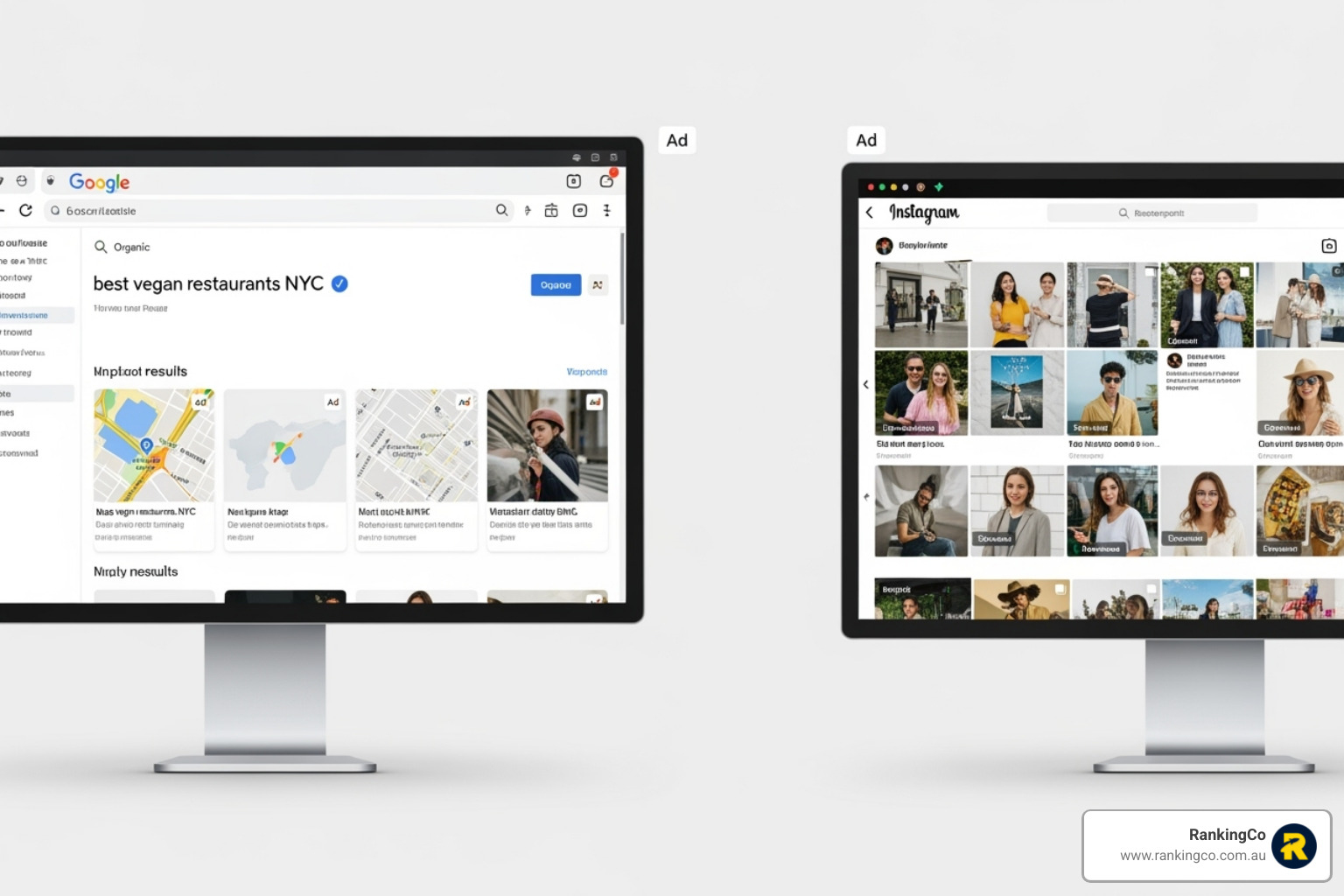
Paid Search vs. Paid Social: The Battle of Intent vs. Findy
The core difference between Google Ads and Meta Ads is "intent" versus "findy." Google Ads capture existing demand, making them a powerhouse for "pull marketing." When a user types a query into Google, they actively express a need. For instance, someone searching for an "emergency roofer near me" has high intent, making Google Ads incredibly effective for bottom-of-funnel conversions.
Conversely, Meta Ads (Facebook, Instagram, etc.) excel at findy—helping users find products they did not know they needed. This is "push marketing" or "demand creation." Users on Meta platforms are engaged in social browsing, where ads can introduce a brand or product. For example, a business owner might see an ad for accounting software while scrolling, sparking interest even if they were not actively looking. This is why 83% of Instagram users find new products on the platform.
A Deep Dive into Audience Targeting Capabilities
Leveraging the different targeting methodologies of each platform is key to a sophisticated advertising strategy.
Google Targeting Methods: Google's targeting is primarily driven by user intent and behaviour.
- Keywords: Target users based on the specific phrases they search for.
- In-Market Audiences: Reach users actively researching products or services in a specific category.
- Custom Intent Audiences: Create audiences based on specific search terms or visited URLs.
- Remarketing: Re-engage users who have previously interacted with your website or app.
- Customer Match: Target existing customers by uploading email lists.
Meta Targeting Methods: Meta's targeting leverages extensive user data on demographics, interests, and behaviours.
- Core Audiences: Target based on demographics (age, location, job title), interests (hobbies, liked pages), and behaviours (purchase history, device usage).
- Custom Audiences: Create audiences from customer lists, website visitors, or users who have engaged with your content.
- Lookalike Audiences: Find new users who share characteristics with your existing high-value customers.
Understanding that Google targets what people are looking for, while Meta targets who people are, allows for strategic deployment to maximise reach and relevance.
Ad Formats and Creative Environments
The distinct environments of Google and Meta dictate the most effective ad formats.
Google Ad Formats:
- Text-based Search Ads: Concise, keyword-driven ads on search results pages.
- Visual Display Ads: Image or banner ads on websites and apps in the Google Display Network, ideal for brand awareness and retargeting.
- Shopping Ads: Visual product listings for e-commerce businesses directly in search results.
- YouTube video ads : Ads that appear before, during, or after YouTube videos, powerful for brand storytelling.
Meta Ad Formats:
- Image & Video Ads: Visually compelling content for the feed, Stories, or Reels.
- Carousel Ads: Showcase multiple images or videos in a single ad unit.
- Collection Ads: A mobile-first, full-screen experience for browsing products within the ad.
- Stories & Reels Ads: Immersive, full-screen vertical video ads that blend with organic content.
The key is to match the message to the user's mindset: informative and emotional content for Meta, and action-driven, solution-oriented messaging for Google. Consistent branding across both platforms builds recognition and trust.
Building a Full-Funnel Strategy for Growing Your Customer Base with Google & Meta Ads
The real power of growing your customer base with Google & Meta Ads is realised when the platforms work together in a comprehensive, full-funnel marketing strategy. Instead of competing for your budget, each platform plays a distinct role in guiding customers through their buying journey.
Think of it as a well-orchestrated symphony—Meta Ads capture attention and build awareness, while Google Ads drive conversions. This strategic approach ensures you are present at every critical touchpoint, from initial findy to the moment of purchase, significantly improving conversion rates and reducing customer acquisition costs.
Top of Funnel (Awareness): Creating Demand with Meta
At the awareness stage, potential customers may not know your business exists or that they need your solution. This is where Meta Ads excel at creating demand.
- Goal: Brand introduction and market education. The aim is to build recognition, not to sell immediately.
- Strategy: Use Meta's detailed demographic, interest, and behavioural data to reach broad, relevant audiences who match your ideal customer profile.
- Ad Formats: Highly visual and engaging formats like Video Ads and Brand Awareness campaigns are ideal for capturing attention and building brand recall.
- Creative: Focus on storytelling, emotional connection, and high-quality visuals to create content that establishes a memorable first impression.
Our Social Media services can help you master this crucial awareness stage.
Middle of Funnel (Consideration): Nurturing Interest on Both Platforms
In the consideration stage, prospects know your brand but are not yet ready to commit. They are researching and comparing options.
- Goal: Engage prospects more deeply, showcase your unique value, and drive meaningful website traffic.
- Strategy: Use sophisticated retargeting campaigns on Meta to re-engage website visitors. Simultaneously, deploy Google Display Ads and YouTube remarketing to maintain visibility. Also, capture initial research queries with non-branded Google Search Ads (e.g., "best software for small business").
- Creative: Provide value through testimonials , case studies , and lead magnets like whitepapers or webinars to build trust and authority.
Our Get More Traffic services can help ensure your website provides a compelling experience during this phase. Strengthen your website's foundations with Onsite SEO and Technical SEO so that every click has a better chance of converting.
Bottom of Funnel (Conversion): Capturing Intent with Google
At the bottom of the funnel, prospects have clear intent and are ready to make a purchasing decision. This is where Google Ads become the dominant force.
- Goal: Drive immediate action—sales, leads, and conversions from high-intent users.
- Strategy: Focus on high-intent keywords (e.g., including "buy," "pricing," "reviews"). Use Remarketing Lists for Search Ads (RLSA) to tailor bids for previous website visitors. Prioritise branded search terms to capture demand you have already created.
- Ad Types: Google Search Ads and Google Shopping Ads are your primary tools for putting your solution directly in front of users at the moment of decision.
- Creative: Use direct, action-oriented messaging with strong calls-to-action , compelling offers, and clear value propositions to drive immediate conversion.
Our Google Ads Management services specialise in capturing bottom-funnel intent and maximising return on ad spend. For organisations focused on pipeline growth, pair paid media with Leads SEO to build a sustainable flow of high-quality enquiries.
Advanced Optimisation: Budget, Measurement, and Automation
Effective growing your customer base with Google & Meta Ads requires continuous refinement through strategic budget allocation, comprehensive measurement, and intelligent automation. This is how good campaigns become great.
Strategic Budget Allocation and Bidding
Smart budgeting involves allocating more funds to the parts of your funnel that produce the best results. Typically, you will invest more in Meta Ads for top-of-funnel awareness and shift the budget towards Google Ads to capture high-intent traffic at the bottom of the funnel.
- Testing: Reserve 10–30% of your total budget for testing new audiences, creative, and strategies. This is your learning fund to find what works before scaling.
- Bidding: Leverage AI-powered options like Google Smart Bidding (Target CPA, Target ROAS) and Meta Advantage+ campaigns . These tools use machine learning to optimise bids in real time for your specific goals.
- The Learning Phase: Be patient. Both platforms require a "learning phase" (often several weeks) to gather enough data to optimise effectively. Making premature changes can reset this process and hinder long-term performance.
Measuring Success: An Integrated Approach to ROI
True measurement requires a holistic view of the entire customer journey, not just looking at each platform in isolation.
- Key Metrics: Track Blended ROAS (Total Revenue / Total Ad Spend) for a true picture of profitability. Monitor Customer Acquisition Cost (CAC) to understand what it costs to gain a new customer, and Customer Lifetime Value (CLV) to ensure that cost is a worthwhile investment.
- Tools: Use Google Analytics 4 as your central hub for tracking user behaviour and gaining cross-channel insights. Proper UTM parameters are essential for understanding the complex journey from the first touchpoint to the final conversion.
For businesses focused on online sales, our eCommerce SEO services complement paid advertising by ensuring your organic presence supports your campaigns.
Leveraging Automation and AI for Efficiency
Businesses that accept AI gain a significant competitive advantage. At RankingCo, we integrate advanced AI to analyse market trends and create highly effective campaigns.
- Google's AI: Performance Max campaigns use machine learning to find customers across Google's entire inventory. Responsive Search Ads automatically test different headline and description combinations to serve the most effective ad to each user.
- Meta's AI: Advantage+ Shopping Campaigns automate campaign setup and optimisation for e-commerce. Dynamic Creative allows Meta's AI to generate the most effective ad combinations from various creative assets you provide.
Automation amplifies strategy; it does not replace it. AI needs high-quality inputs—compelling creative, clear objectives, and accurate conversion tracking—to deliver optimal results. This technological edge allows RankingCo to set new benchmarks in performance for our clients across Australia, New Zealand, the US, and Canada.
Frequently Asked Questions about Growing Your Customer Base with Google & Meta Ads
When exploring growing your customer base with Google & Meta Ads , many businesses have similar questions. Here are answers to the most common concerns we hear from clients across Australia, New Zealand, the US, and Canada.
Which platform is better for B2B businesses?
Both platforms are valuable for B2B marketing, but they serve different purposes. The best approach depends on your objective.
-
Google Ads is essential for capturing high-intent B2B leads. When a decision-maker actively searches for a solution like "enterprise software" or "B2B marketing consultancy," Google connects you with them at the exact moment of need.
-
Meta Ads excel at B2B brand building and demand creation. While users are not actively shopping for business solutions, you can target them by job title, industry, or company size. This is ideal for promoting valuable content like whitepapers, case studies, or webinars to build authority and nurture leads through a long sales cycle.
Pair your paid strategy with Leads SEO to strengthen organic visibility for solution-led searches and support long-term pipeline quality.
How much should I budget for ads when starting out?
There is no single figure that fits every business. A prudent approach is to begin with a structured test budget that aligns with your objectives and financial capacity, then scale as the data demonstrates positive results. The initial goal is learning—identifying audiences, creative, and keywords that perform for your market. Both Google and Meta have a learning phase that requires sufficient data before algorithms can optimise effectively. Once you have statistically significant results, you can confidently expand investment to accelerate growth. If you would like guidance on an appropriate starting point for your situation, please contact our team.
Do I need an agency to manage my Google and Meta ads?
While you can manage campaigns yourself, there is a significant difference between running ads and running profitable ads that deliver consistent growth. Executing an integrated, full-funnel strategy is complex and requires substantial time and specialised expertise.
An experienced agency provides strategic oversight based on managing thousands of campaigns. We bring advanced tools, stay current with constant platform changes, and can spot opportunities and problems quickly to avoid costly mistakes. At RankingCo, our refined systems and processes connect your advertising efforts to your broader business goals.
The decision often comes down to opportunity cost. Is your time better spent learning the intricacies of campaign management or focusing on what you do best—growing your business? For many, partnering with specialists allows them to achieve better results faster. We view our agency partnership as an investment in expertise and efficiency, allowing us to handle the complexities of growing your customer base with Google & Meta Ads through sophisticated, data-driven strategies.
Take Control of Your Digital Future – Get Found Now
The secret to sustainable customer growth is not choosing between Google and Meta, but orchestrating them to work in harmony. By leveraging Meta's power to create demand and Google's precision to capture it, you build a marketing engine that delivers predictable, scalable results.
This integrated approach to growing your customer base with Google & Meta Ads transforms advertising from a cost centre into a growth driver. Instead of scattered campaigns, you create a cohesive customer journey that guides prospects from first touch to final conversion, reducing acquisition costs and improving overall performance.
At RankingCo, we have witnessed this change across hundreds of campaigns. As the world’s best little digital agency, headquartered in Brisbane, QLD, we specialise in creating integrated, global strategies for startups and scaling businesses. Our clients span Australia, New Zealand, the US, and Canada, and we understand the nuances of building customer bases in different international markets.
Our full-funnel approach combines Meta's creative storytelling with Google's intent-driven precision. We deliver global and local SEO, multi-platform paid advertising, and website strategy/CRO to convert visitors into customers. We do not just manage your Google Ads ; we align paid media with strong organic foundations including Onsite SEO , Technical SEO , and eCommerce SEO for sustained growth.
If you need trusted support on the ground, explore our Digital Marketing Services in Brisbane. Wherever you operate, our team ensures your campaigns respect regional nuances while maintaining a unified global strategy.
Ready to build a comprehensive advertising strategy that drives real growth? Our expert team at RankingCo is here to create a powerful, integrated approach to growing your customer base with Google & Meta Ads . Contact our expert team at RankingCo today and see how the right strategy can transform your digital marketing results.
